|
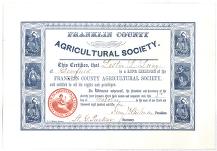
Franklin County Agricultural Society Membership of Lester L. Luey
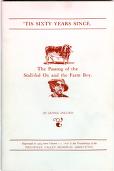
"Tis Sixty Years Since. The Passing of the Stall-fed Ox and the Farm Boy"
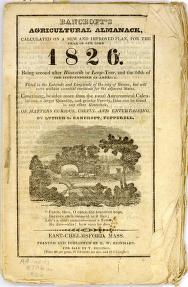
"Bancroft's Agricultural Almanack...1826"

Manure fork
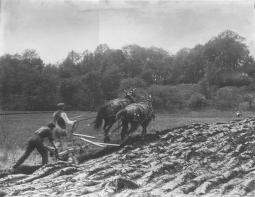
"Plowing Sward"
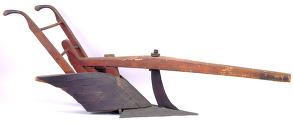
Ditch Plow
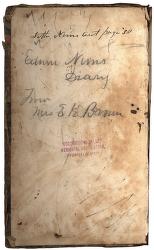
Excerpts from Edwin Nims' Agricultural Diary
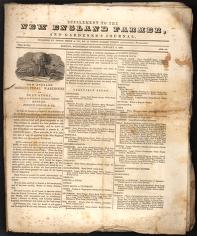
"Supplement to the New England Farmer, and Gardener's Journal"

"The American Farm Book; or Compend of American Agriculture"

"An Address Delivered Before the Hampshire, Franklin, & Hampden Agricultural Society; at Northampton, Oct. 24, 1827."
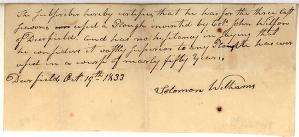
Affidavit for Wilson's plough
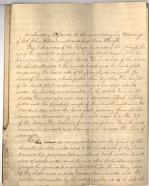
Patent application for J. Wilson's plough
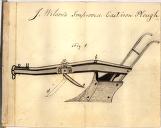
J. Wilson's Improved Cast iron Plough
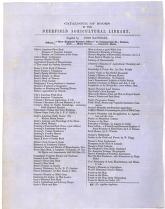
"Catalogue of Books in the Deerfield Agricultural Library"
|
Summary and Objective
Subject: Agriculture in the Connecticut River Valley 1760-1860.
Goal: To develop an understanding of the methods used by the Connecticut River Valley farmers to improve farming practices resulting in the renourishment of the land and subsequently improved production that would lead to the creation of a market economy.
Students will understand that:
• Gentlemen farmers led the way in promoting agricultural stewardship and agricultural innovations such as manuring the fields, crop rotation and the use of the plow to enhance the fertility of the land and production of their crops.
• Gentlemen farmers used publications and other formal communication to convey their interest and findings regarding agricultural innovations.
• Agricultural societies were formed to promote improved farming practices.
• Agricultural fairs were used as a method for introducing the practicing farmers to innovations.
Students will be able to:
• demonstrate an understanding of progressive agricultural practices, ways of communicating these practices, and the relationship of resulting surplus to an emerging market economy.
Suggested Background Reading:
Garrison, J. Ritchie, "Landscape and Material Life in Franklin County," MA 1770-1860, Knoxville, Tennessee UP, 1991.
"New England Farmer", Bound Volumes 1833, 1834.
Pabst, Margaret Richards, "Agricultural trends in the Connecticut Valley Region of Massachusetts, 1800-1900," Smith College Studies in History, October 1940-July 1941,
pp. 10-30.
Stoll, Steven, "Larding the Lean Earth: Soil and Society in Nineteenth Century America," New York, Hill and Wang, 2003.
Sweeney, Kevin. "Gentlemen Farmers and Inland Merchants," Annual Proceedings of the Dublin Seminar for New England Folklife (1981): "The Bay and the River: 1600-1900," Boston: Boston University Press, 1982, pp. 101-16.
Background Information:
At the turn of the 19th Century, the land in the original colonies was beginning to become exhausted from poor agricultural practices. Some of the farmers decided to move west, find new lands, and continue the same methods, while others, committed to improved agricultural and scientific practices, remained in their original settlement and sought to find ways to improve the land and land production. Among these farmers were prominent Virginians, Washington, Jefferson, and James Madison. The practices of progressive farmers during this same period in the Connecticut River Valley are the foci of this lesson. Those who believed that improved use of the land was essential and provided leadership were gentlemen farmers. These professional farmers saw the improvement of land, improved husbandry and increased production as one step in the movement toward a market economy. Manuring and renourishment of the fragile land was critical. Understanding the relationship between animals and crop production and the proper use of the plow were viewed as critical elements in land use. To educate others about the preferred agricultural practices, communications among these farmers occurred. Agricultural organizations met regularly to share information and published reports. Almanacs and farm journals were read. Agricultural fairs served as yet another vehicle for promotion of new ideas and methods.
Teaching Plan
Step 1.
Begin the lesson with a discussion of the importance of soil by reflecting on the following quote: “The only fertile soil is top soil, a layer of black loam just two feet deep where cultivation takes place. All the plants known to dry land come from topsoil… Soil is the tablecloth under the banquet of civilization: no matter what people build upon it, when it moves, all food and finery go crashing. It is the skin of the earth and is so completely associated with cultivation that it takes a name descriptive of the very act of opening the land: the furrow slice” (Stoll, Larding the Lean Earth, Hill & Wang, 2003, p14).
Step 2.
Refer to the introductory essay, introduce the disparate views between those farmers who moved west and those who remained to nourish and sustain the land. Have a class discussion about the possible motivations of each group and list these on newsprint.
Step 3.
Divide the class into groups to examine farming practices in Western Massachusetts and report back to the class, using illustrations when possible: 1) Nims Diary, 2) Stall Fed Oxen, 3) Implements - Manure Fork, Wilson's Cast Iron Plough images, Ditch plow, "Plowing Sward". Develop as a class a profile of agriculture in Deerfield, then discuss the potential for production beyond subsistence that could lead to market development.
Step 4.
Invite the class to reflect on the ways in which a farmer could keep abreast of new ideas. Then examine in small groups: 1) Catalogue of Books, 2) Luey's Agricultural Society Membership, 3) Bancroft's Almanack, 4) Supplement of the New England Farmer, and 5) the American Farm Book. After a discussion of the materials, tell what these publications reveal about the attitudes toward farming and sharing successful techniques. What are some of the practices that seemed important? Conclude by making a display of these images. Beside each image, write a contemporary equivalent.
Step 5.
For the following day, conclude by asking two groups of students to complete one of the following tasks: 1) Audiotape the 1827 Hitchcock "ADDRESS" for the entire class to hear. Then hold a discussion related to the content and consider if the message is as timely now as when Hitchcock presented it to his audience in 1827. What would have changed? Provide an introduction of Dr. Hitchcock with his scholarly background that would underscore his authority.
2) Make a drawing of an agricultural fair showing how this media was used as a communication tool for farmers and their families. Students can search the American Centuries web site for images of the Eastern States Exposition in West Springfield, Mass., or look for historical images and current information for other agricultural fairs on the Internet. Does the agricultural fair serve this purpose in our contemporary life?
|




